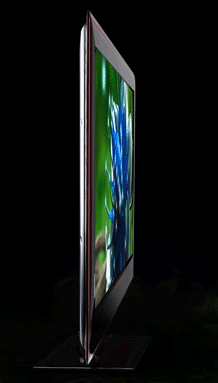LED TV
A flat panel LCD TV set that uses LEDs
(light emitting diodes) for its backlight source rather than the
traditional fluorescent lamps (see CCFL).
Smaller, more power efficient and having a greater optical range than
the fluorescents, LEDs produce deeper blacks and more saturated color.
Sony was the first to sell an LED TV in 2005.Although the TV is really an LCD, and the LEDs are secondary components, the industry calls them LED TVs to avoid more drawn-out monikers such as "LED backlit TV" or "LED-based LCD TV."
White or RGB
White LEDs are less costly, while red, green and blue (RGB) LEDs provide a richer color gamut.
Full Array or Edge Lit
There are two LED TV architectures. There can be a full array of LEDs that cover the entire back of the screen, or LEDs can beam light in from the edge. The full array provides uniform light across the screen; however, the case is thicker. In addition, groups of LEDs can be selectively dimmed based on the image in those areas at that moment, although not all full arrays do that.
Edge-lit LED TVs can be housed in ultra-thin cases but have a tendency to be brighter at the edges than at the center. See LED, LCD, flat panel TV and Dolby HDR.
 |
| A 55" Samsung LED TV |
|---|
| Using edge-lit LEDs rather than fluorescent tubes, this Samsung TV is only 1.2" deep. Introduced in 2008, it was amazingly thin compared to previous LCD TVs. (Image courtesy of Samsung, www.samsung.com) |

No comments:
Post a Comment